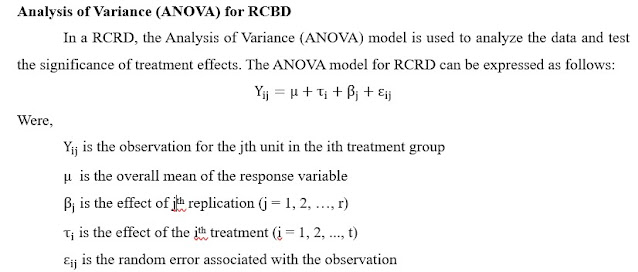Principles of design of experiments-I: Replication
This blog deals with the basic concept of replication and its functions along with suitable examples. (reading time 10 min.)
There are three principles of designs of experiments:
1) Replication
In this blog, we will confine to replication.
The repeated application of treatments under investigation is known as replication. Sometimes we use repetition instead of replication. In designs like CRD where the experimental material is homogeneous, we replace the word replication with repetition.
Why do we need replication?
Let’s understand it by
one example. Suppose you are a selector in Olympic selection committee of India
looking for a suitable candidate for 10 m Air Rifle event. You have two
candidates Abhinav Bindra and CarryMinati. You asked both of them to fire one
shot and Abhinav scored 9 while Carry scored 9.6. Will you send Carry for
Olympics? Is this scenario sufficient to reach the conclusion?
I know your answer is a Big No but why?
Just because Carry is a YouTuber you might think he should not be sent. Well, that's is definitely not a good reason for rejection!
The logical argument should be that there is a good probability that Carry (or any other candidate) might get that shot (of 9.6) by chance. We should see that the difference in the performance of both the candidates must be due to their shooting skills instead of chance. Hence,
you should ask for a set of 5-6 instead of 1 shot in order to reach a conclusion and if Carry still performs better than he should be definitely send for Olympics.
Same is the case with your research. If you take only one observation than there are chances that your results might get affected by external factors. We will not be able to detect if the difference in the variable studied is due to external factors or due to actual treatment difference.
Also, when the replication is 1 it’s degrees of freedom becomes 0.
What are the functions of replication?
- To provide an estimate of the error
- To reduce the experimental error
Let’s see one by one both
the functions.
To provide an estimate of the error
Let’s see one example where we
are giving three hormonal treatments IBA, NAA and GA3 to onion
seeds for sprouting. We took three replications. Now, we observe that seeds of first
and second replications treated with same IBA show a different result. Why this happens?
We expect that the seeds
of different replications treated with the same hormone, to give the same results
but this doesn’t happen just because of the exogenous factors. The exogenous
factors can be light, CO2 concentration, relative humidity etc.
We don’t take into account all these factors in the study. All these exogenous
factors contribute to generating an error. The variations within replication of
the same type of treatments form an error and thus we can say that replication allows
us to estimate an error.
To reduce the experimental error
The experimental error is
inversely proportional to the square root of the replication. So, the more the
replication the less would be an error.
A higher number of replications will result in a low experimental error and ultimately higher accuracy.
What should be ideal number of replication?
There is no one line answer to this question. The number of replications depends on the following factors:
Resources available: More the resources available more the number of replication
Precision required: Higher the precision more the number of replication
Experimental material: Less the materiel less the number of replication
Degree of freedom: Replication should be such that the error degree of freedom be
greater than 12.
Ideally 3 replications are taken in experiments.
Tune to video if you prefer to learn by seeing instead of reading
Hope you found this blog useful. If have any query or suggestions please do post it below.
References:
1) Das, MN and Giri, NC (1979). Design and Analysis of Experiments.
New York: Wiley (Halsted Press).
2) Rangaswamy, R (2010). A textbook of Agricultural Statistics
(2nd Edn). New Age International Publishers, New Delhi.
To learn more about Agricultural Statistics follow my youtube channel




Comments
Precision required
Resources available
Experimental material available.
For a RBD design 3 repl. are good